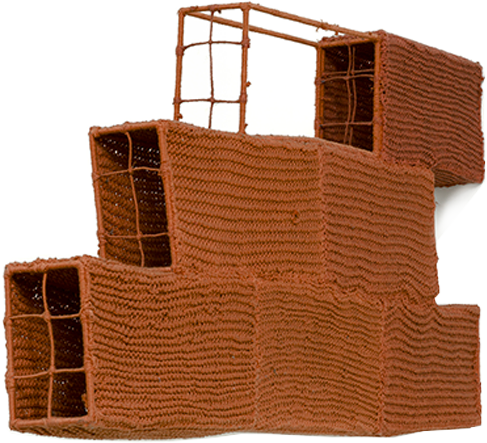I met Franca Sonnino in 2007 thanks to Mirella Bentivoglio, on the occasion of the exhibition Pages Image. In 2010, I invited her to exhibit two works in the exhibition Venti libristi, curated by Bentivoglio herself for the Cortese & Lisanti gallery. Over the years, the fruitful collaboration between me and Francesco Petillo led to opening Gramma_Epsilon Gallery in Athens in 2021, with Franca becoming one of the gallery’s leading artists. In 2022 I curated with Simona Campus a large anthological exhibition of her work, Franca Sonnino_Il filo il segno, lo spazio, in two venues: The MUACC in Cagliari and Gramma Epsilon Gallery in Athens.
In 2023 Franca held a solo show at the Jochum Rodgers gallery in Berlin and was featured in the exhibition Le dee perdute e ritrovate curated by Rosanna Ruscio and myself for the Mdina Bienniale (Malta), as well as in numerous other exhibitions at the MUAM in Gubbio, Gramma_Epsilon and Mouzakis Butterfly Factory in Athens. In 2024 her works are exhibited at Artissima in The different revolution project.


Franca Sonnino was born in Rome in 1932. After graduating in Literature, she began her artistic career in the early 1970s, dedicating herself to painting under the guidance of Maria Lai. Franca will remember her:
“I turned to Maria to take drawing lessons. At first, she always kept forgetting that promise, I had to chase her… Then, we started, but slowly. But I didn’t like drawing so much. She said it was not essential to know how to draw. I stopped and then started working with my hands, with the thread since I used to knit a lot. I understood that by beginning from a material that was already familiar to me I could do many other things.”
The thread, already present as the subject of her paintings, will soon become her privileged medium, definitively replacing the brush from the late 1970s. In this regard, Mirella Bentivoglio writes:
“Franca Sonnino is an artist who feels the space and, despite using a minute medium like the thread,” she makes space”. This artist redeems the domesticity of the thread in the breadth of the context where it is put; she made bricks of wire, and walls with these bricks, almost as a challenge to a millenarian absence of the woman – the weaver – from the construction of the house, which was her prison and her kingdom.”


Franca Sonnino’s work does not follow rigorous mathematical rules, but it is rather dictated by an inner poetic drive, linked to an irrational emotional impulse, which is at the same time sensorial. The art historian Franca Zoccoli summarizes as follows:
“Sonnino’s works come to fruition by slow progression, with organic growth, segment after segment, knitting knots one by one. Like nature’s products, they reject abstract Euclidean rigor, they are never regular or perfectly symmetrical.”

